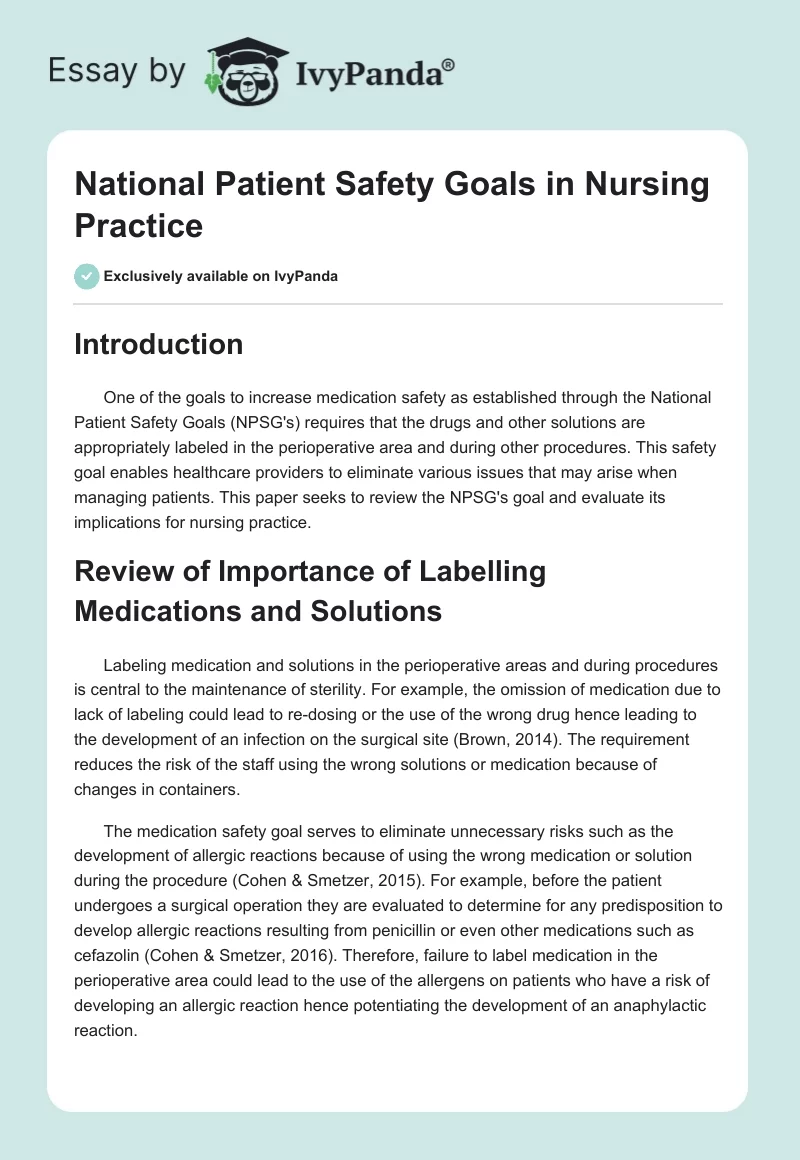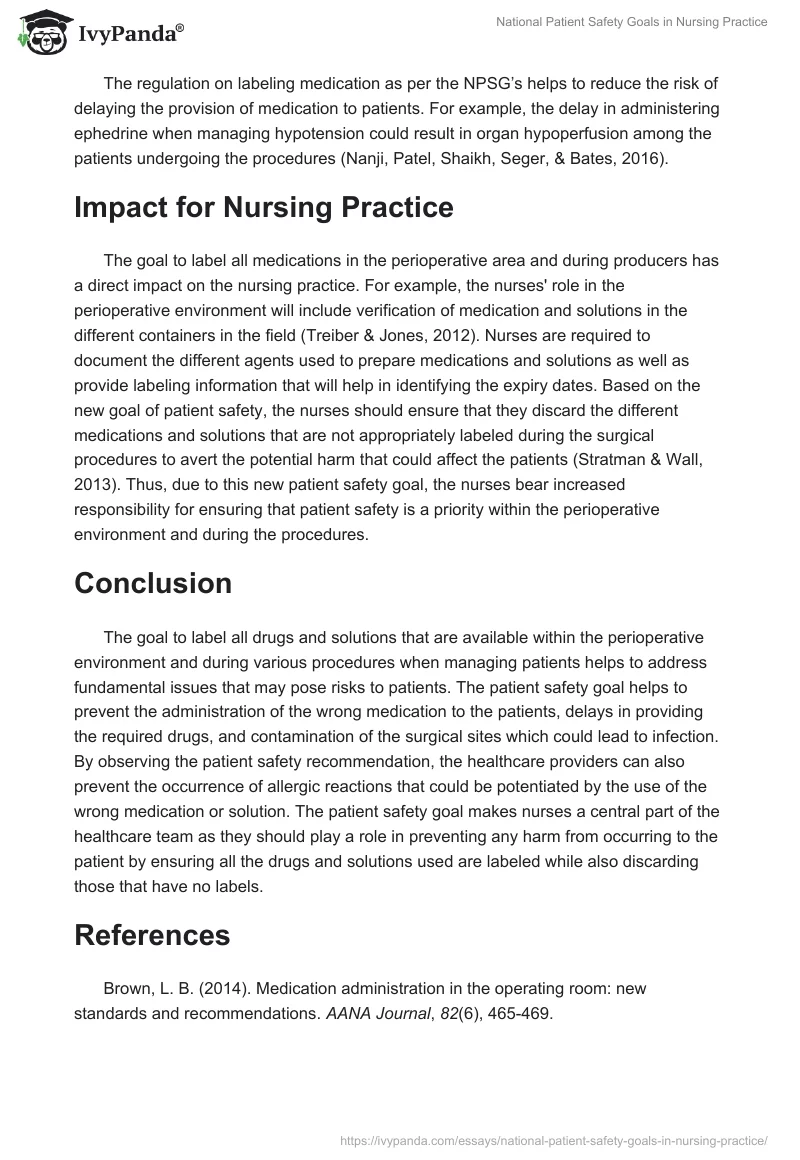Introduction
One of the goals to increase medication safety as established through the National Patient Safety Goals (NPSG’s) requires that the drugs and other solutions are appropriately labeled in the perioperative area and during other procedures. This safety goal enables healthcare providers to eliminate various issues that may arise when managing patients. This paper seeks to review the NPSG’s goal and evaluate its implications for nursing practice.
Review of Importance of Labelling Medications and Solutions
Labeling medication and solutions in the perioperative areas and during procedures is central to the maintenance of sterility. For example, the omission of medication due to lack of labeling could lead to re-dosing or the use of the wrong drug hence leading to the development of an infection on the surgical site (Brown, 2014). The requirement reduces the risk of the staff using the wrong solutions or medication because of changes in containers.
The medication safety goal serves to eliminate unnecessary risks such as the development of allergic reactions because of using the wrong medication or solution during the procedure (Cohen & Smetzer, 2015). For example, before the patient undergoes a surgical operation they are evaluated to determine for any predisposition to develop allergic reactions resulting from penicillin or even other medications such as cefazolin (Cohen & Smetzer, 2016). Therefore, failure to label medication in the perioperative area could lead to the use of the allergens on patients who have a risk of developing an allergic reaction hence potentiating the development of an anaphylactic reaction.
The regulation on labeling medication as per the NPSG’s helps to reduce the risk of delaying the provision of medication to patients. For example, the delay in administering ephedrine when managing hypotension could result in organ hypoperfusion among the patients undergoing the procedures (Nanji, Patel, Shaikh, Seger, & Bates, 2016).
Impact for Nursing Practice
The goal to label all medications in the perioperative area and during producers has a direct impact on the nursing practice. For example, the nurses’ role in the perioperative environment will include verification of medication and solutions in the different containers in the field (Treiber & Jones, 2012). Nurses are required to document the different agents used to prepare medications and solutions as well as provide labeling information that will help in identifying the expiry dates. Based on the new goal of patient safety, the nurses should ensure that they discard the different medications and solutions that are not appropriately labeled during the surgical procedures to avert the potential harm that could affect the patients (Stratman & Wall, 2013). Thus, due to this new patient safety goal, the nurses bear increased responsibility for ensuring that patient safety is a priority within the perioperative environment and during the procedures.
Conclusion
The goal to label all drugs and solutions that are available within the perioperative environment and during various procedures when managing patients helps to address fundamental issues that may pose risks to patients. The patient safety goal helps to prevent the administration of the wrong medication to the patients, delays in providing the required drugs, and contamination of the surgical sites which could lead to infection. By observing the patient safety recommendation, the healthcare providers can also prevent the occurrence of allergic reactions that could be potentiated by the use of the wrong medication or solution. The patient safety goal makes nurses a central part of the healthcare team as they should play a role in preventing any harm from occurring to the patient by ensuring all the drugs and solutions used are labeled while also discarding those that have no labels.
References
Brown, L. B. (2014). Medication administration in the operating room: new standards and recommendations. AANA Journal, 82(6), 465-469.
Cohen, M., & Smetzer, J. (2015). “No Unlabeled Containers Anywhere, Ever!” Where Did this come from? Hospital Pharmacy, 50(3), 185-188.
Cohen, M., & Smetzer, J. (2016). Key Vulnerabilities in the Surgical Environment: Container mix-ups and syringe swaps; Do not confuse Idarucizumab with Idarubicin. Hospital Pharmacy, 51(3), 199-203.
Nanji, K. C., Patel, A., Shaikh, S., Seger, D. L., & Bates, D. W. (2016). Evaluation of perioperative medication errors and adverse drug events. The Journal of the American Society of Anesthesiologists, 124(1), 25-34.
Stratman, R. C., & Wall, M. H. (2013). Implementation of a comprehensive drug safety program in the perioperative setting. International Anesthesiology Clinics, 51(1), 13-30.
Treiber, L. A., & Jones, J. H. (2012). Medication errors, routines, and differences between perioperative and non-perioperative nurses. AORN Journal, 96(3), 285-294.


